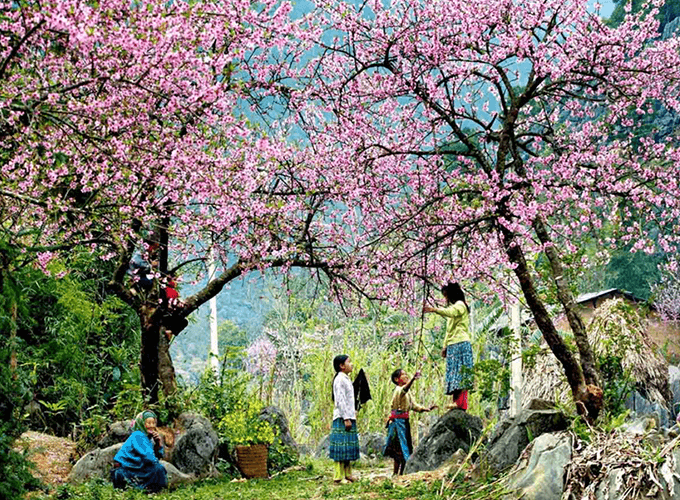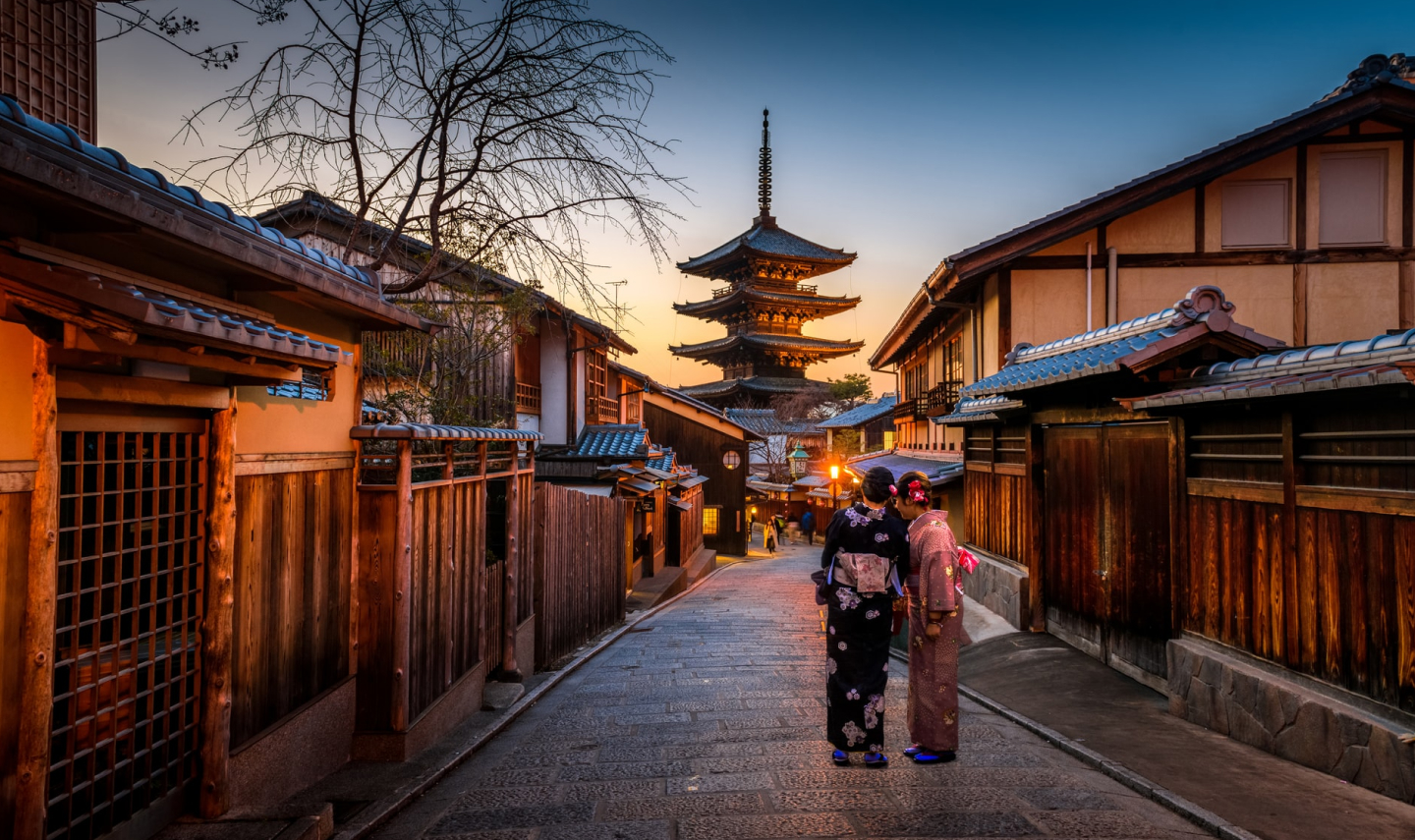The frontier town of Sapa in northern Vietnam hides more than just rice paddy terraces and rustic local villages. My Way Travel’ own Sarah Griffin shares her unforgettable and downright exhilarating experience at a Red Dao village, far from the tourist track.

Peach Flower In Spring, Sapa
When I set off in the early morning out of Hanoi, and bound for the rustic mountain town of Sapa, I wasn’t sure what to expect. Perhaps some trekking, and probably my fair share of incredible photos. What I never expected was landing in an episode of National Geographic. But since Vietnam is one of those places that has a way of surprising you, that’s exactly what I got.
I arrived in Sapa on a crisp, clear spring morning. I made my way to a beautiful eco-lodge located in Thanh Kim, about 20 kilometres outside of Sapa – special because it’s surrounded by Hmong, Tay and Red Dao villages. Even at the time, Sapa was a popular tourist destination, and it wasn’t hard to spot a few foreign visitors within the city itself.
Cast out into the hills, though, and you’d be hard pressed to find anything resembling a tourist destination. Sapa is still home to a collection of tiny villages who rarely use electricity, much less host foreign tourists. It’s uplifting to see many of these communities entirely untainted by foreign influence, and I would be lying if I said I wasn’t intrigued by how they managed to maintain their age-old traditions.
And had you told me that I would be experiencing some of those age-old traditions firsthand within that very trip, I would have shaken my head and laughed. Thankfully, the universe has a funny way of bringing you face-to-face with some incredible things when you’re travelling.
An Unexpected Invitation
I’d spent the day trekking and cycling through some of the most dramatic landscapes I’ve ever seen, but toward the end of my day, I was unexpectedly invited to a Red Dao village to join in their Tet – or Vietnamese Lunar New Year – celebrations. It was a daunting prospect, arriving in this community of people I knew very little about, and knew very little about me.
But who was I to pass up an opportunity to experience something so few others would ever dream to?
The tables were turned when I arrived at the simple wooden hut village and was greeted by over 100 sets of eyes, fixated on me and my foreign appearance. Sometimes as a traveller, I feel like such a voyeur, so it was enlightening to experience such an obvious role reversal.
The celebrations involved praying to ancestors and ceremonial dancing to ensure a fruitful year of rice in the upcoming harvest. I’d learn that this was an important time of the year for the locals here, since the harvest was what sustained the entire community both with sustenance and with goods to trade and sell.
But perhaps in the strangest turn of events, all the men in the village with the surname “Lee” were involved in these prayers. This sent them into a trance-like state before they jumped into a fire and walked on hot coals.
Yes – they walked on hot coals.
This experience was a feast for my senses – drums beating, fire roaring, chanting and singing, electric-red traditional head dress and the glares and giggles of the children as they tugged on my arms and touched my foreign skin.
The ceremony continued for five breathtaking, exhilarating hours – with more dancing, fire walking, beating of drums and the scattering of rice. It was, without a doubt, the most mesmerising thing I’ve ever witnessed.
_DSC0514
A Greater Understanding
The Dao ethnic minority is incredibly diverse in all aspects of life: social and religious practices, architecture, agriculture and dress. Rows of terraced rice fields zigzag up steep mountains, creating breathtaking views in an area where farming remains the major source of income. Rice is still the staple crop. This annual ceremony is a very important part of the Dao calendar to ensure a plentiful harvest.
But beyond their beliefs and traditions, the Red Dao are unique in how well they have retained their distinct cultural characteristics. Even today, Dao women wear elaborate headgear, usually a triangular-shaped turban, either embroidered or decorated with silver coins, beads and colored tassels. It’s common for Dao women to shave their eyebrows and sometimes the whole head, coating the skull with wax. Within these communities even today, this is the striking and wholly unique appearance of the local women.
Working in the tourism industry presents a double-edged sword. On one hand we want to preserve and protect local customs and traditions from commercialisation and the negative effects of tourism. Yet on the other hand, we want to share these wonderful experiences and invite the whole world. So to discover this Red Dao village, still so rich in tradition – without televisions and coca cola – was beyond anything I could have ever imagined.
It was exciting to see that in 2006, travelers can still step into their own personal Discovery channel. But we must ensure this is how we leave it. To be sensitive and respectful of these local cultures means that our children can have the same experiences and our world can continue to be a melting pot of traditions and cultures.
—
Explore the majestic mountains surrounding Sapa Tours with a remote village trek alongside My Way Travel!










